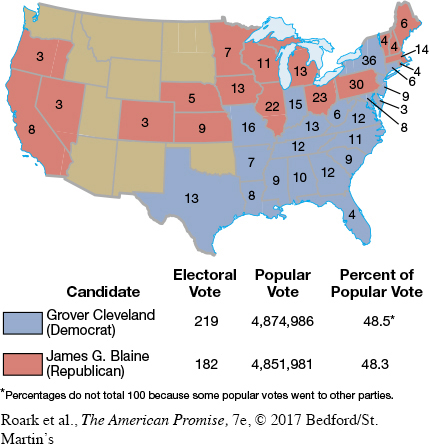The American Promise: Printed Page 519
The American Promise, Value Edition: Printed Page 474
The American Promise: A Concise History: Printed Page 539
Reform and Scandal: The Campaign of 1884
James G. Blaine assumed leadership of the Republican Party and at long last captured the presidential nomination in 1884. A magnetic Irish American, Blaine inspired such devotion that his supporters called themselves Blainiacs. But Mugwump reformers bolted the party and embraced the Democrats’ presidential nominee, Governor Grover Cleveland of New York. The burly, beer-

They soon regretted their words. In July, Cleveland’s hometown paper, the Buffalo Telegraph, dropped the bombshell that the candidate had fathered an illegitimate child in an affair with a local widow. Cleveland, a bachelor, stoically accepted responsibility for the child. Crushed by the scandal, the Mugwumps lost much of their enthusiasm. At public rallies, Blaine’s partisans taunted Cleveland, chanting, “Ma, Ma, where’s my Pa?”
Blaine set a new campaign style by launching a whirlwind national tour. On a last-
With less than a week to go until the election, Blaine had no chance to recover from the negative publicity. He lost New York State by fewer than 1,200 votes and with it the election. In the final tally, Cleveland defeated Blaine by a scant 23,005 votes nationwide but won with 219 electoral votes to Blaine’s 182 (Map 18.2), ending twenty-
REVIEW How did the question of civil service reform contribute to divisions within the Republican Party?